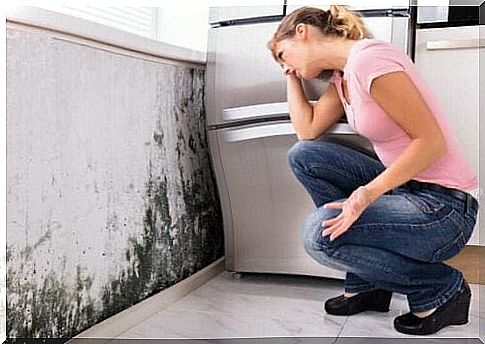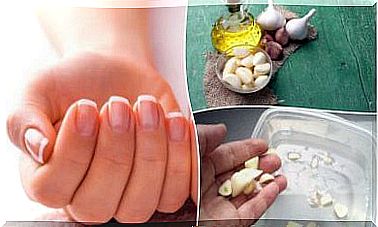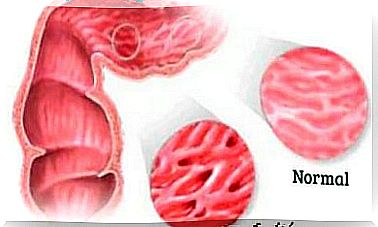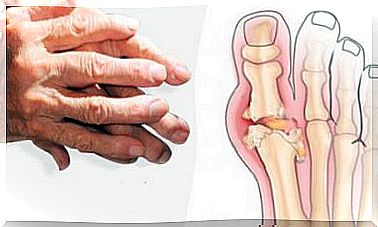Does Mold In The Home Cause Health Problems?
Moisture inside homes can lead to mold growth in different spaces. This, in addition to damaging structures, can cause health problems.

The presence of mold in the home causes problems that go far beyond structural damage. While it is true that its smell and the stains it creates on the walls and ceilings are the most notable elements, it should be noted that it causes certain health problems to appear over time.
According to information published by the Center for Disease Control and Prevention , exposure to damp, moldy environments results in respiratory symptoms and allergic reactions in some people. It can also trigger attacks in patients with asthma.
What is mold?
Mold is a form of fungus that tends to grow in indoor and outdoor spaces. It frequently occurs in areas with high humidity, such as roofs or walls where water seeps, windows, pipes or any place in frequent contact with liquids.
Likewise, it easily proliferates in cardboard elements, wood products, plaster panels, carpets or paints. Since it produces spores, mold spreads easily by stagnating in the air. Then, if the environment is humid and hot, it thrives.
According to an article published in the journal Environmental Health Perspectives , it is estimated that around 500 species of fungi affect human health. The most common in interiors however are Cladosporium , Penicillium and Aspergillus.

Types of mold
It is currently unclear how many types of mold exist in the world. While some suggest there may be 100,000, others claim there are 300,000 or more. In any case, as we have commented, around 500 have been identified that are potentially harmful to people. Here are the most famous:
- Alternaria : it corresponds to a genus of ascomycete fungi. These molds tend to grow in damp areas of the house, such as showers or under sinks with leaks.
- Aspergillus : This mold can grow in indoor spaces, on dust, food or building materials. Although it tends to cause allergies, it can sometimes become poisonous and cause breathing problems or inflammation.
- Cladosporium: this is a fungus that thrives in cold as well as hot areas. Usually it thrives on fabrics and wooden surfaces. It is linked to allergies.
- Penicillium: it has a blue or green colored surface with a texture reminiscent of velvet. It thrives in buildings or houses damaged by water, on carpets, wallpapers and mattresses. Its presence in the house increases the risk of respiratory diseases.
- Acremonium: this mold has a particular pink, gray, orange or white color. It usually thrives in areas with condensation from humidifiers, drain pans and at window seals. It is one of the most dangerous species because it is associated with diseases of the bone marrow and the immune system.
How does mold get into the house?
Mold spores are found in outdoor spaces as well as in interiors; however, they are not easily seen. They enter homes through windows, open doors, ventilation ducts, or air conditioning and heating systems.
They can also get stuck to things like clothes and shoes which then get them inside the house, and even to animal hair. If there is adequate humidity inside, mold will develop; otherwise, it will not cause any problem.
Home mold and health: does it cause problems?
In general, the presence of mold in the house is not a problem, unless its spores come into contact with damp spaces and begin to grow. If so, there are several health risks, especially if some people at home have respiratory or immune system conditions.
Possible allergies
The development of mold in the home can make symptoms worse for those with some type of allergy. More specifically, we can highlight symptoms such as nasal congestion, itching in the nose and throat, sneezing, watery eyes and excess mucus.
In addition, as explained in a study published in the journal Allergy , it would appear that early exposure to mold or humidity increases the risk of asthma and rhinitis.
More risk of respiratory diseases
In addition to allergies, mold is also associated with respiratory illnesses to watch out for. Research published in Environmental Health has determined that residential humidity and mold significantly increase the risk of respiratory infections like bronchitis. Mold is also associated with:
- Hypersensitivity pneumonitis.
- Allergic alveolitis.
- Chronic rhinosinusitis.
- Sinusitis.
- Problems of the lower respiratory tract in healthy children.
Aspergillosis
Contact with Aspergillus mold can lead to a serious disease known as aspergillosis. This can cause a severe infection which even spreads to other parts of the body. Symptoms such as chronic cough, cough with bleeding, fever, wheezing and weight loss are found. It causes the following clinical manifestations:
- Bone pain.
- Chest pain.
- Chills.
- Decreased urine volume.
- Headache (headache).
- Respiratory failure.
- Visual difficulties.
- Lesions on the skin.

How to prevent health problems caused by mold at home?
There are of course several measures to prevent the presence of mold in the house from causing health problems. One of the most important is making sure you have ventilated, clean and non-humid spaces. In this regard, the Environmental Protection Agency suggests having a humidity level below 60%.
Here are some other recommendations:
- Quickly resolve water leakage problems.
- Install a dehumidifier to reduce humidity in indoor spaces.
- Open windows for air to circulate.
- Install an extractor to absorb moisture during cooking.
- Avoid drying clothes in interior spaces.
- Empty and ventilate cupboards, especially if they are not used frequently.
- Regularly clean all surfaces likely to receive mold (walls, ceilings, furniture).
- Choose anti-mold products to disinfect bathrooms and damp spaces.
- Call a professional to resolve any structural issues that facilitate the presence of mold.
Consulting the doctor is important
Exposure to mold does not always cause health problems. Despite everything, it is recommended to avoid its presence in the house. In addition, it is advisable to consult the doctor if you have symptoms of allergies or respiratory diseases. It should be remembered that they can lead to serious complications.
Although mold is not always responsible, it is still a factor that tends to make symptoms worse. It is therefore necessary to follow the professional’s recommendations and resolve the humidity problems as quickly as possible.









